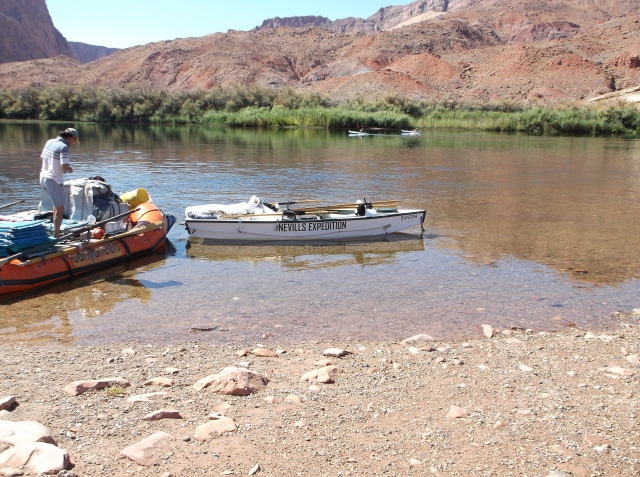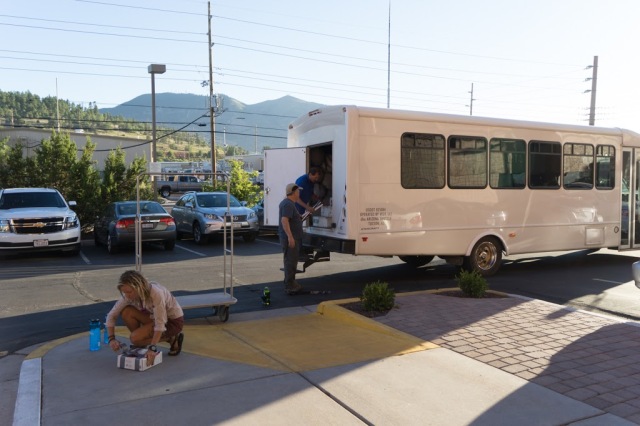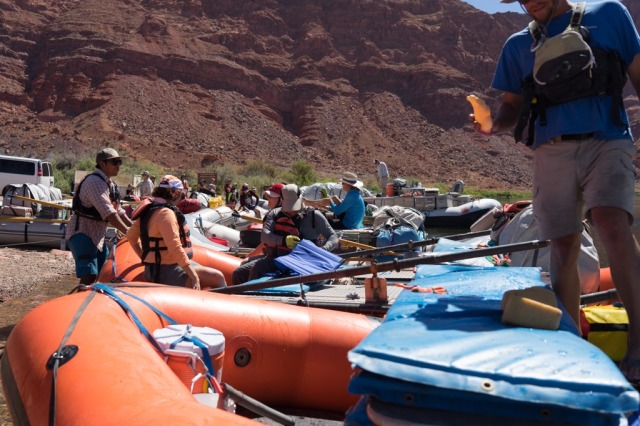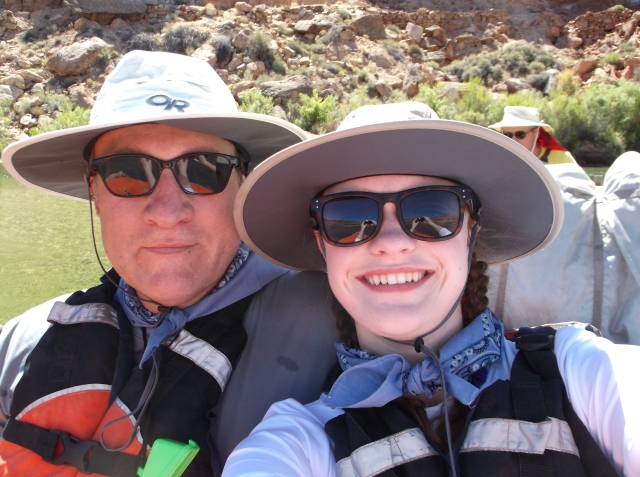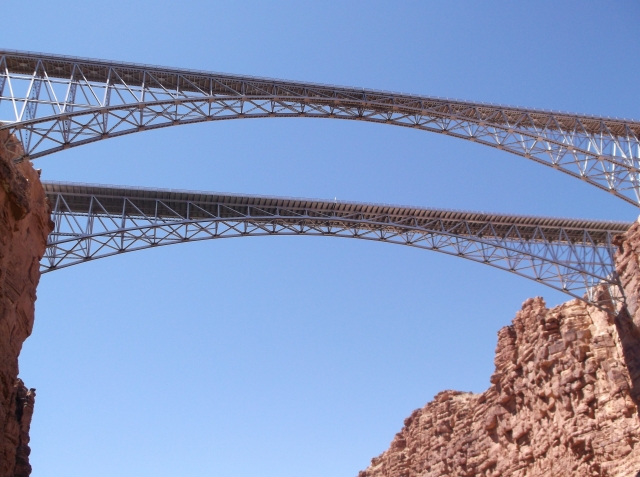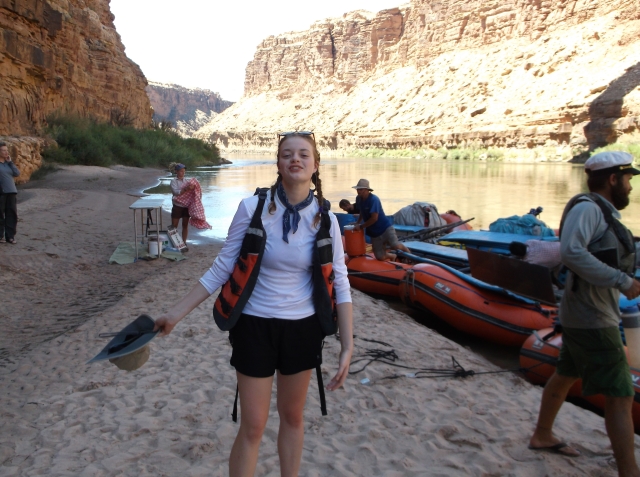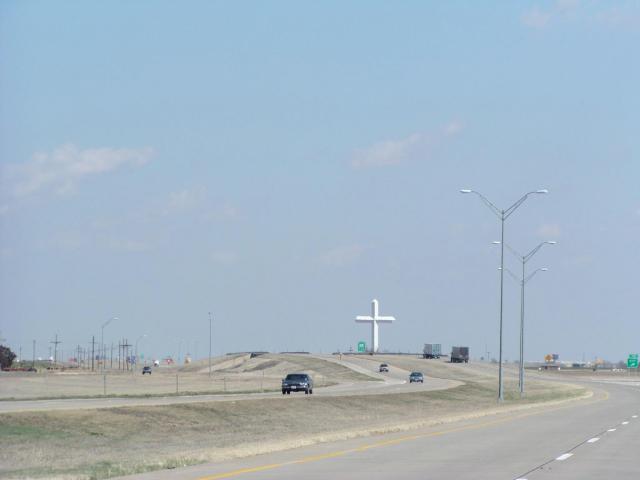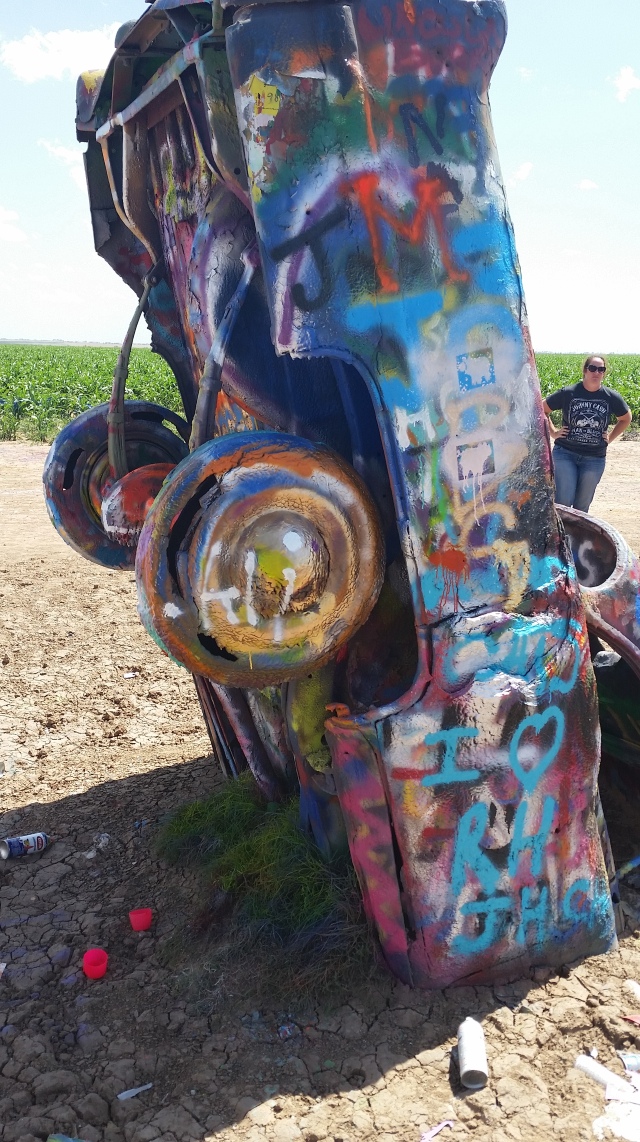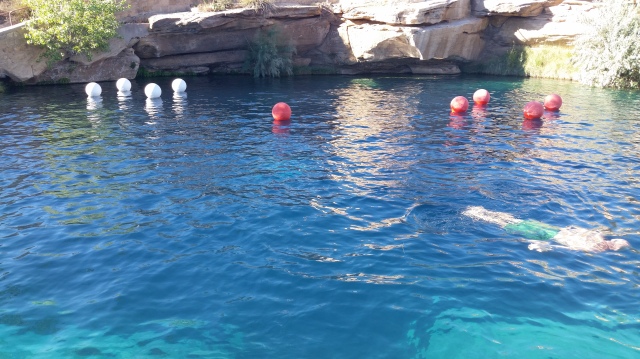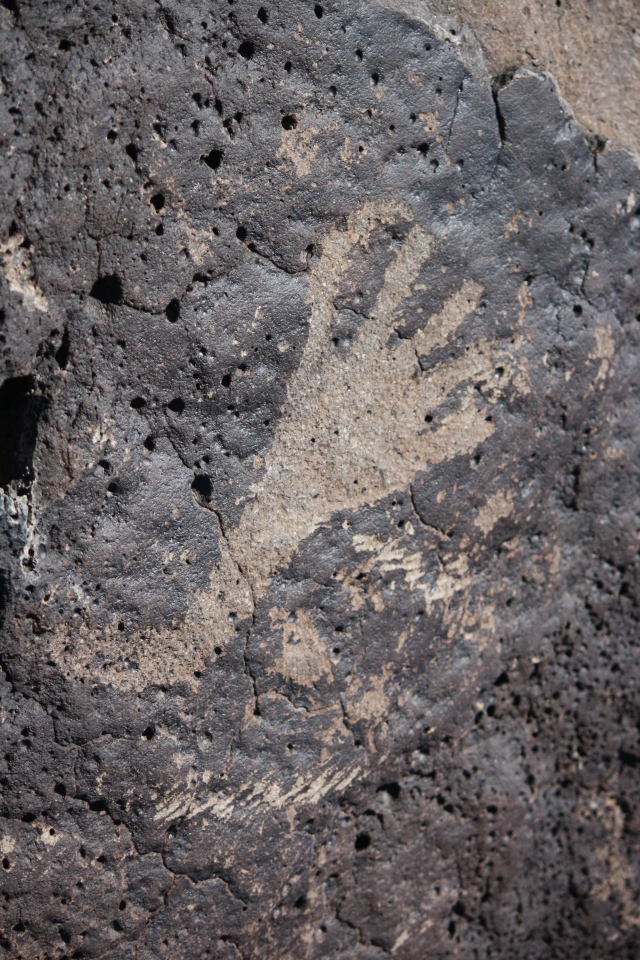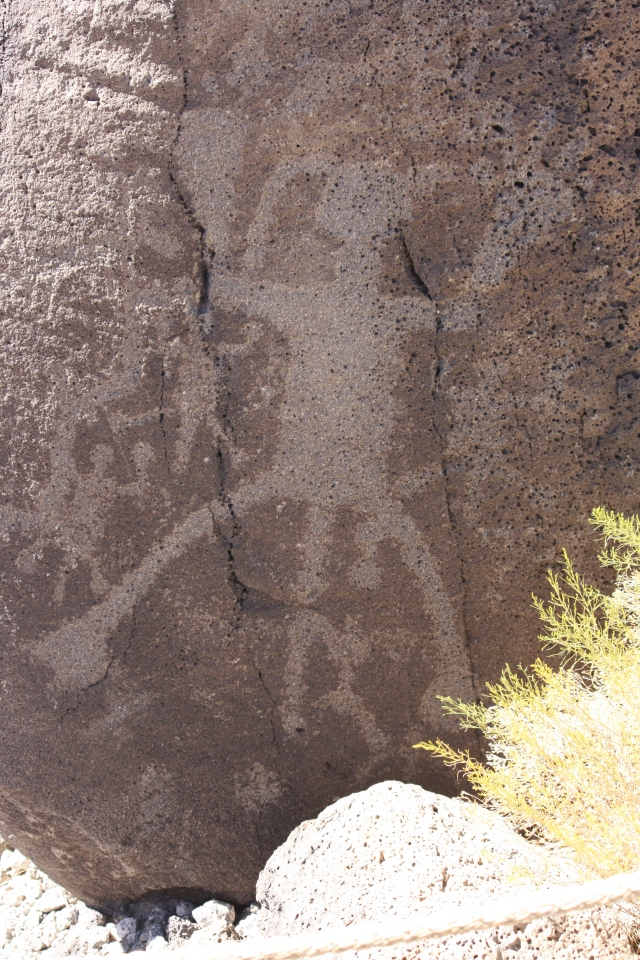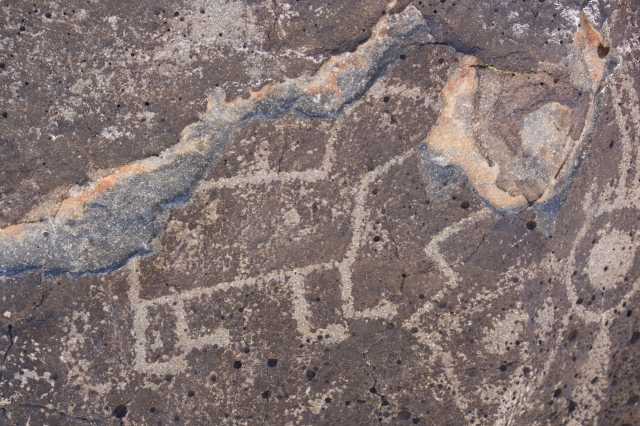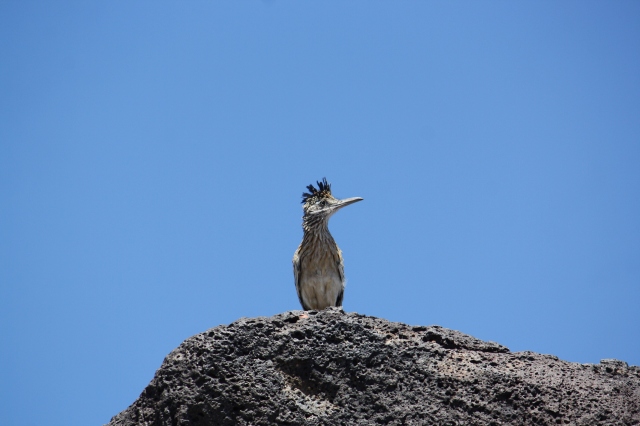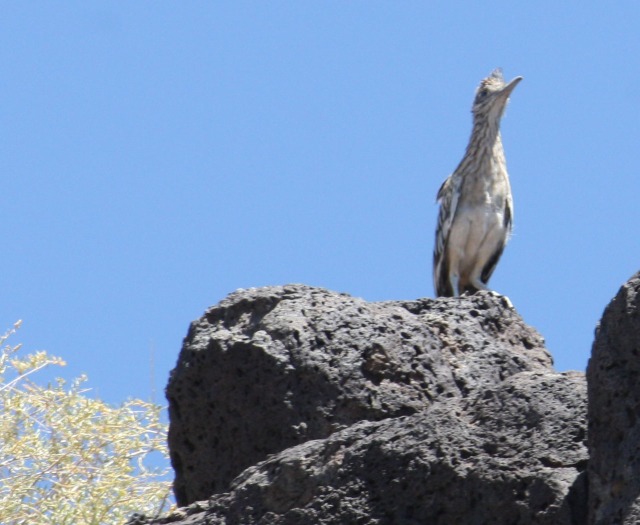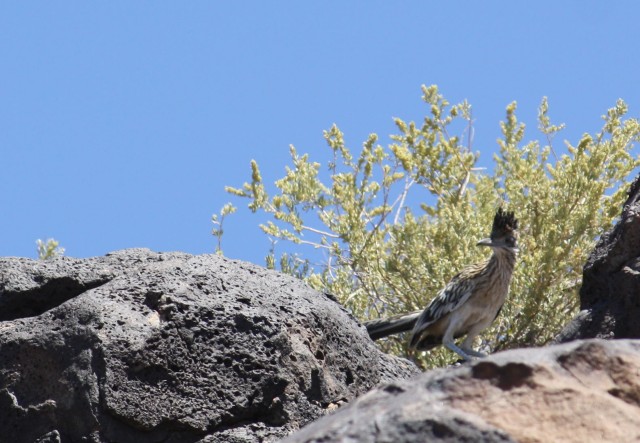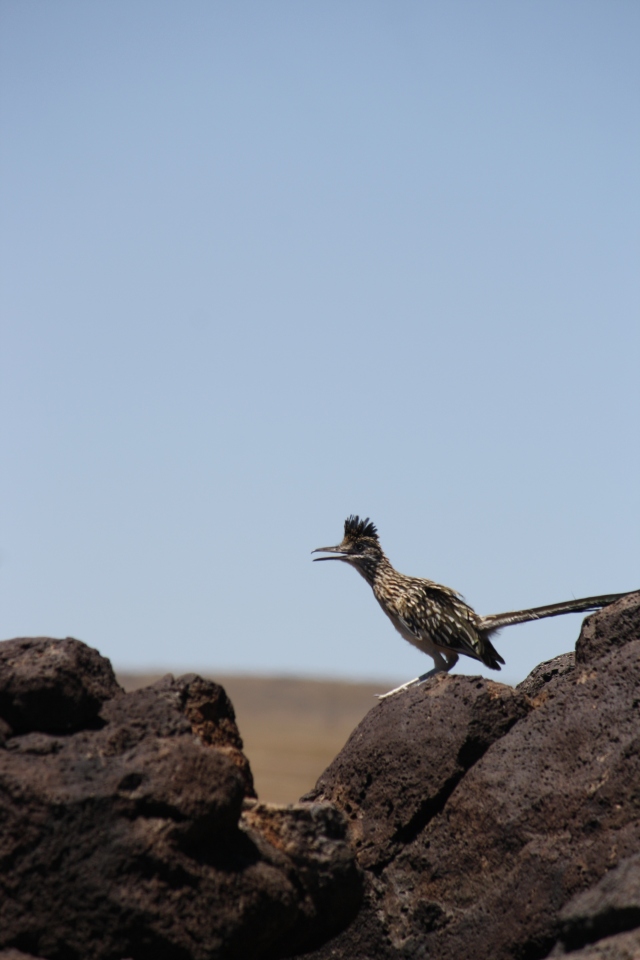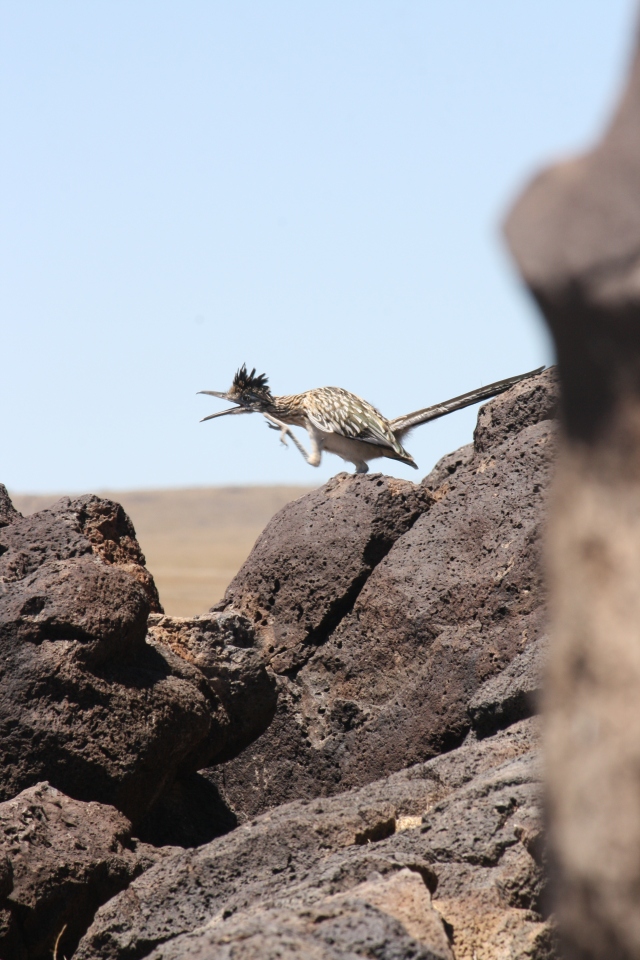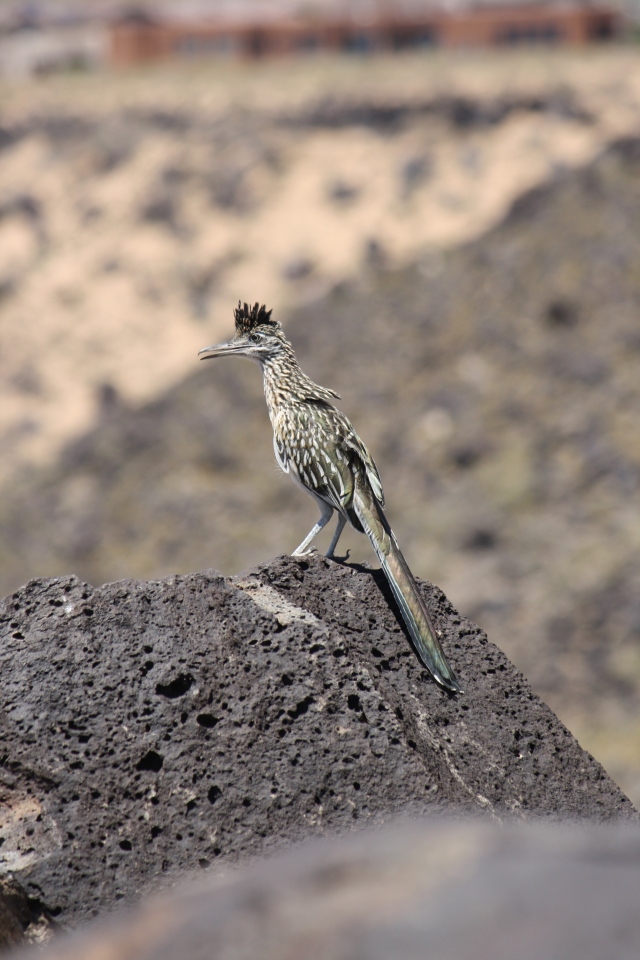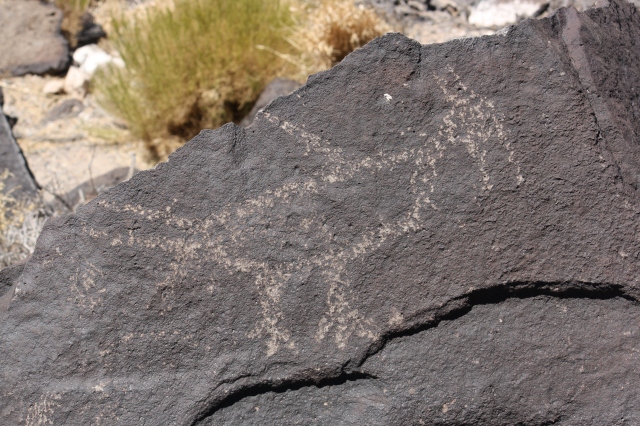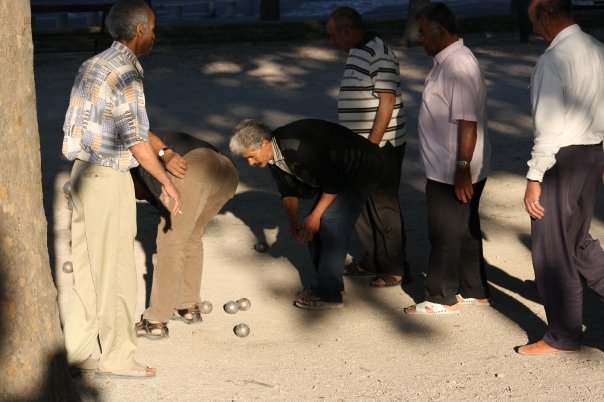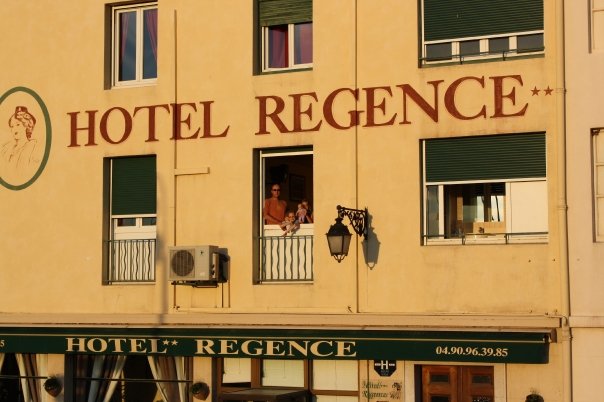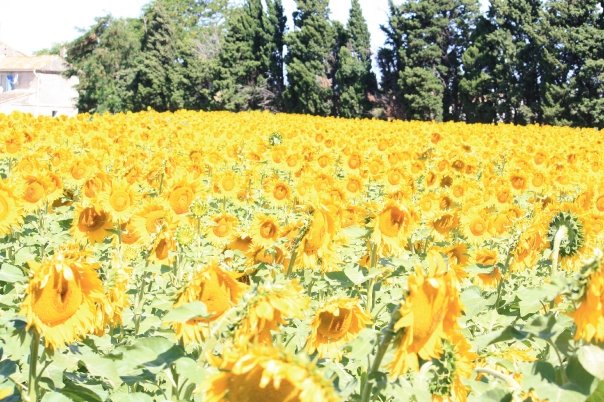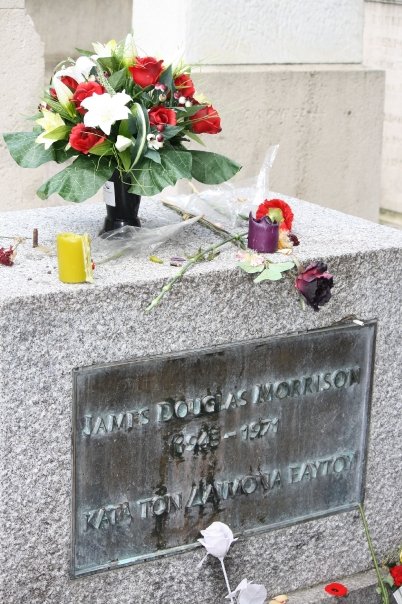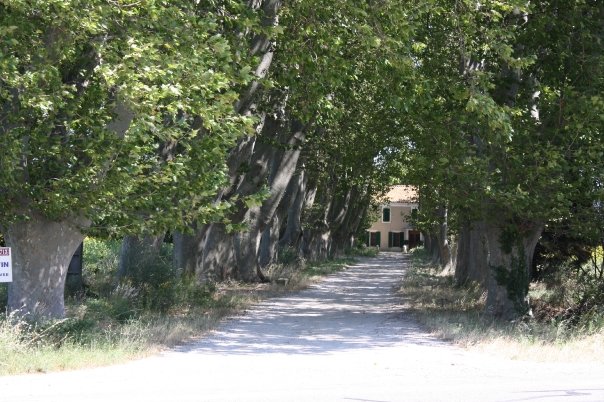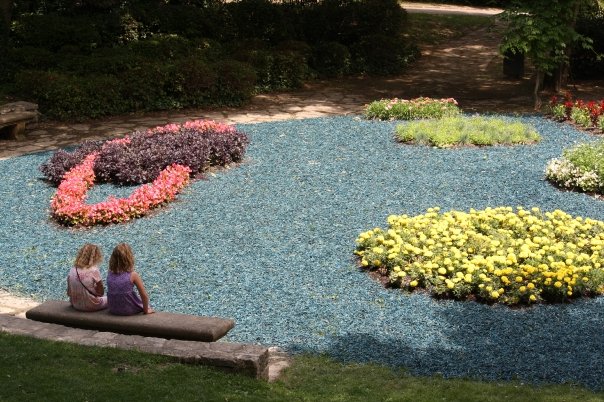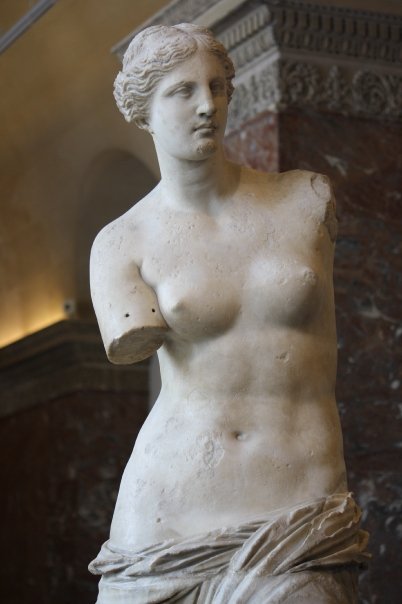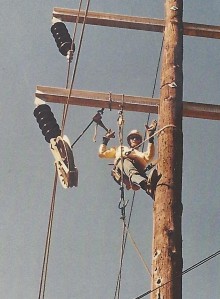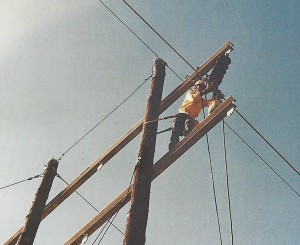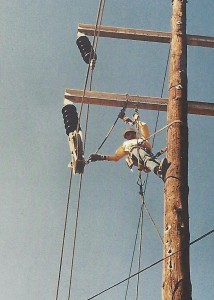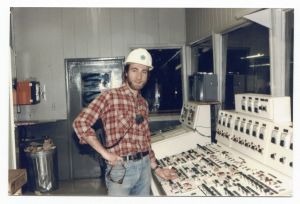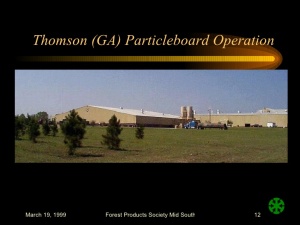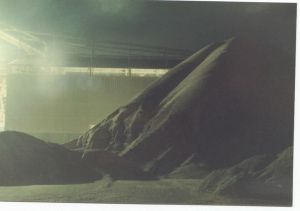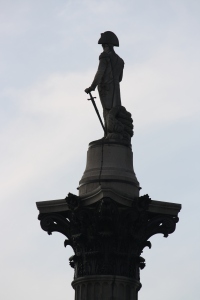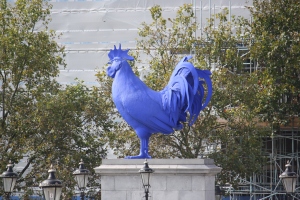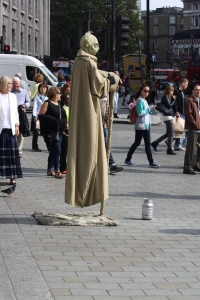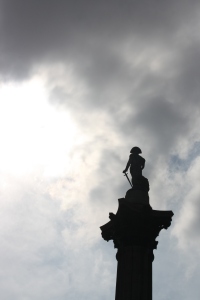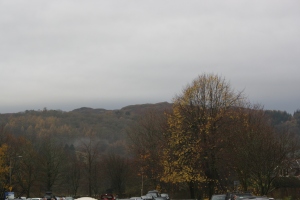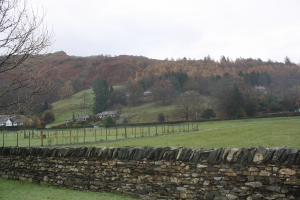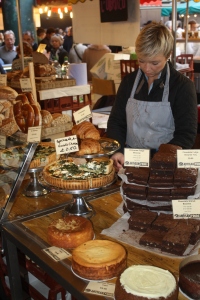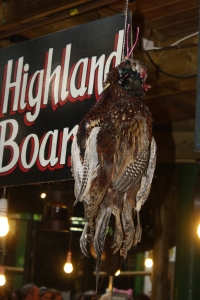
Orientation and River People
The night before the trip begins, we meet at the Holiday Inn Express in Flagstaff. Erin, a slightly built enthusiastic woman who looks more like a college freshman than a 26 year old river guide, orients the group and passes out our gear. She will be our hiking guide on day 6, the day Julia Rose and I, along with the Zifkin family, hike up the Bright Angel Trail to the South Rim, while 5 more passengers hike down and continue the canyon trip with our group. Erin is a swamper, an apprentice raft guide, not yet qualified with oar boats, especially with passengers–she tells us later she will probably pilot a motorized raft before an oar raft). We meet the other 13 members of the group–3 couples; a family of four, the son and daughter freshly graduated from college; and 3 men traveling solo–receive our dry bags for our camping gear and our ammo cans for our personal gear, and watch a video and ask questions. Erin reassures us about the hike out, which has worried me for a year, given the shape of my knees. “It’ll be fun,” she says, alluding to the temperatures, which are expected to be 110 or higher. “We’ll take our time and ‘shade-hop.’ It’s just another part of the canyon, something you don’t want to miss.”
Afterward, we go to WalMart for last minute supplies and to Cracker Barrel for supper, then spend the evening sorting gear into the army surplus ammo cans–waterproof and easily opened, for personal items on the raft–and the larger dry bags, for sleeping bags, clothing, everything else.
We awake the next morning, not having slept a lot, to eat breakfast and catch the Canyoneers bus to Lee’s Ferry and the put in. There, we slather on sunscreen, receive our life jackets and adjust them for the trip, and meet our guides: There are three passenger boats and guides–Ethan, the trip leader, Omar, and Captain Dave; two guides to row the equipment boats–Jason and Leo; and two swampers–Erin, also the hike-out guide, and a friend of Leo’s who is taking the trip as a work-along, essentially paying for the trip by doing all the grunt work. In addition to the rafts, our trip features an original 1939 wooden “cataract boat,” built by the first commercial river runner through the canyon–Norman Nevills–and paddled by his grandson, Gregg Grieff.
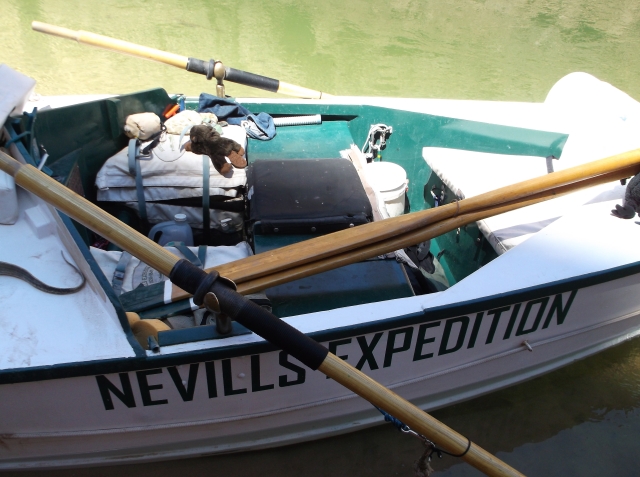
The passengers divide up into the three boats. Not quite sure of the etiquette, I ask Captain Dave is Julia Rose and I can ride on his boat for the day. “I’d love to have you on my boat,” he says, and I know that I instinctively made a good choice. Raft guides take great pride in their boats, how they are rigged, keeping them clean, and how they feel comfortable interacting with their passengers. Each guide instructs his passengers how to sit during a rapid, because each rower has a feel for the way weight is distributed and how the boat handles in the waves.

Captain Dave–Photo by Ken Herman
Dave is not a particularly big guy, but once he starts rowing it’s clear that he is powerful. Thirty-one years old, he eventually tells us, with a dark complexion, he rarely applies sunscreen even though he wears shorts and muscle shirts and a white sailing captain’s hat. He’s serious about his guide duties, and as we drift down the entrance to the canyon he entertains us with lessons on the geology that we see on the canyon walls, and stories about the early river runners who named–or had the rapids named for–the rapids and other features, as well as pointing out sites that played a major role in the history of river running. We see a condor soaring beyond Navajo bridges, briefly, before it veers out of sight, and Dave recounts the story of their near extinction and ongoing recovery, point out that there is a release point near the put in.

Riding in the bow with Julia Rose and me is Glen, a quiet 70 year old science teacher from Connecticutt, not yet retired. Later on the trip we discover that we both hung out around the Nantahala River in North Carolina in the 1970s, doing whitewater, though he beat me there by a few years. Still, it’s quite possible we could have been there at the same time at some point. Glen reminds me of the actor who played the old Norman Maclean in the movie A River Runs Through It, in that final scene where he is fishing the Big Blackfoot river alone. Glen proves an inspiration, going on all the hikes, experiencing the canyon with a quiet serenity, the way I like to imagine myself at 70. Like us, this is his first trip to the canyon.
In the back, riding behind Dave and the drybags which give him a backrest, are Ira and Delana from Kansas City, one of the 3 couples. Ira’s retired military, mid-forties, and still does consulting work to supplement his retirement after putting in his career years. Delana is a special education teacher. Together they are quiet though friendly.
As he rows, Dave slowly reveals his story. He grew up in southern Arizona, and he tells of making an exploratory trip to the canyon about seven years earlier, spending a few days backpacking and being thunderstruck by the country. He quickly realized that in only making a couple of trips a year he could never see it all or even begin to have some sense of a relationship with the canyon. He sold everything he had and committed to the canyon, moving north and working whatever jobs he could in order to live there. He spent a lot of time working as a backpacking guide and eventually moved into river work, advancing from swamper to guide. We would find out later that he and Erin are together, living frugally, with no electricity or running water and not much space, but lots of books. I end up talking books quite a bit with Dave–he reads us a passage from a Loren Eisley essay one night around camp, a passage talking about the appeal of the desert and rivers. We discuss Ed Abbey, and I tell him about Brown’s Four Corners, a book that describes the geography, geology, history, biology, and anthropology of the Colorado Plateau uplift.
As we begin our trip the Paria River enters river right at mile 1. Today there is virtually no flow coming out of the Paria, so the Colorado, flowing aqua green and cool (46-47 degrees) out of Glen Canyon dam, about 15 miles upstream, is unmuddied and will remain so for the remainder of our trip. As the days go on and we get further from the dam, the water will cloud a little, but it still looks pure and drinkable by day six. Last summer when we stopped by the put in on our way home from the North Rim, the Paria was running a low volume, but the incredibly concentrated silt content transformed the Colorado into a muddy brown for the length that we could see, the first five miles of the river, well past the Navajo Bridges spanning the canyon. When the Paria is running, I am told, the Colorado is muddy.
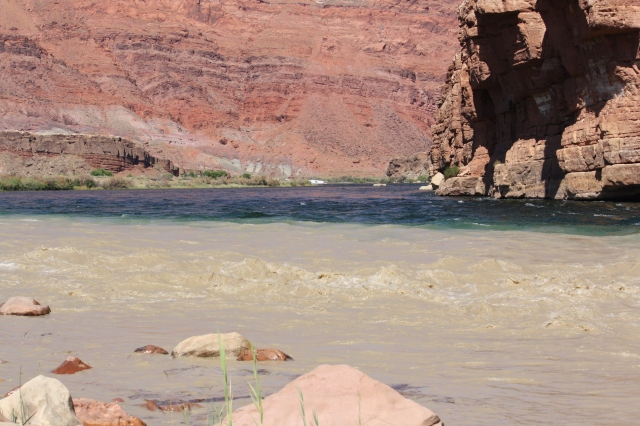
Paria River muddying the Colorado, Paria Riffle, just below Lees’s Ferry, August 2015
The Paria River also marks the beginning of Marble Canyon, so named by John Wesley Powell because he thought the name sounded more majestic–there is no marble in the canyon. Powell describe it this way: “The limestone of this canyon is often polished, and makes a beautiful marble. The rocks are of many colors–white, gray, pink, and purple, with saffron tints.” Technically, it is part of the Grand Canyon.
The day is warm and clear, well over 100 degrees, possibly 110 or higher–intense, but with a low humidity, and not as overwhelming as might be imagined by a non-westerner. As we float the sun strikes our legs at the thigh, the most vulnerable part of the body because it’s horizontal, and we dip our bandannas into the cool water and cover the exposed skin, which keeps us cool and prevents any burning on the first day. Our Outdoor Research Sombriolet sun hats keep our faces and neck in deep shade, but sunscreen helps us with the reflections.


